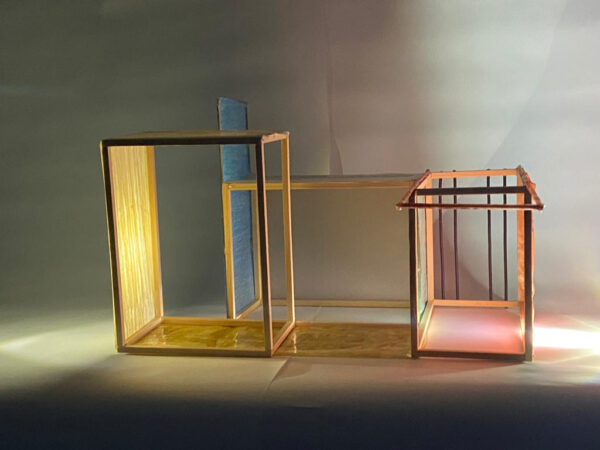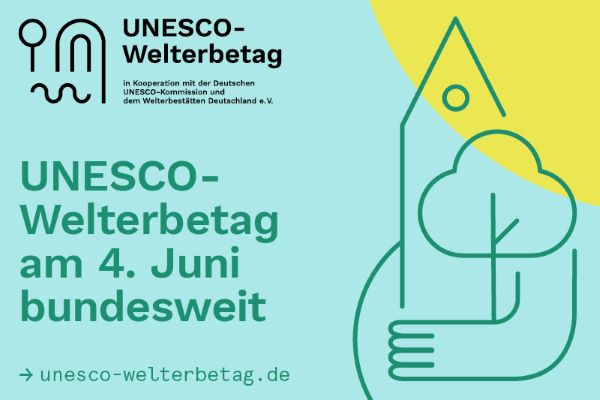Events
a kick-off event near the Weissenhof Estate
Fri, June 23rd, 2023, 4– 8 pm
„Outsight in – view from the Weissenhof estate into the region”
Opeing of an Installation on the Hermann-Lenz-Höhe near the Weissenhof Estate
One of the kick-off events of the IBA’27-Festival #1, organized by Freunde der Weissenhofsiedlung e.V. and IBA´27
4 – 6 pm:
IBA-housing projects introduce themselves
The first IBA´27-Festival is starting– and we are joining at the Weissenhof Estate!
The Weissenhof Estate (Weissenhofsiedlung) is one of the most important examples of “Neues Bauen” (“New Objectivity” or “New Building”) in the history of architecture. It was part of a building exhibition held by Deutscher Werkbund together with the city of Stuttgart in 1927.
About 100 years later, the IBA´27 starts it’s first IBA´27-festival exactly here: Architects from seven IBA housing projects present their ideas and plans for living today. And thus build a bridge from the past to the future.
Under trees and the open sky, scaffolding, printed truck tarpuiles and huge red letters, visible from afar, attract people’s attention. The tower is a signal for the IBA´27. You can walk inside the installation and experience it – and at the opening event you can grab a drink and speak with architects of several IBA-projects.
Those involved in the projects are on site and will present and discuss their work with some organizers of the IBA´27, Friends of the Weissenhof Estate and the audience: What is left of the ideas of “New Building”? What differences and parallels are there between yesterday and today? And how can the Weissenhof Estate, an inhabited monument, be developed for the future?
Location: Hermann-Lenz-Höhe (opposite of Birkenwaldstr. 217), 70191 Stuttgart
IBA projects which are presented: Quartier am Rotweg, Quartier Böckinger Straße, Quartier C1, Tobias-Mayer-Quartier, KaepseLE-Goldäcker, Zukunft Münster 2050, Leben in der Vorstadt (Schorndorf), 1927-heute-2027 (Weiterentwicklung Weissenhofsiedlung)
Moderation: Grazyna Adamczyk-Arns (IBA´27), Dr. Raquel Jaureguízar (IBA´27), Suse Kletzin (Freunde)
starting at 6 pm:
Art events alsongside the Gaucherstraße
A green, overgrowm path winds its way from the Hermann-Lenz-Höhe to the Wagenhallen through alotment gardens. A group of performance artists of the Wagenhallen (Florian Feisel) will perform the walking-act “bipolare Nagetierbegleitung”.
Located at the container city of Wagenhallen you can let the evening come to an end with the performance Festival „Performing the Others“ from Martina Wegener.
More IBA’27-Festival#1 kick-off events:
starting at 2 pm: GroundBreaking Stadtgarten
starting at 8.30 pm: Opening of the IBA’27-Festivalzentrale
Information Event: Visitor and Information Centre for the Weissenhof Estate
The International Building Exhibition 2027 (IBA’27) is taking place in the Stuttgart region coinciding with the 100th anniversary of the Weissenhof Estate, an icon of modernism. Since the inclusion of the two Le Corbusier buildings in the UNESCO World Heritage List in 2016, visitor numbers to the Weissenhof Museum have already significantly increased. The IBA’27 anticipates at least 1 million visitors in its presentation year of 2027, with an estimated 250,000 visitors expected for the Weissenhof Estate. Without expanding the current museum operations, it would be impossible to handle and accommodate such visitor numbers.
Against this background, the state capital Stuttgart intends to create an innovative, multifunctional Visitor and Information Centre (BIZ). How can a building be designed and constructed that not only builds upon the pioneering ideas of modernism but also seeks to find a lasting form based on the lessons of the past hundred years and the pressing issues of the present? Resource issues, waste reduction, and climate neutrality are just as important as beauty, accessibility, appropriation, and adaptability.
The BIZ should serve as both a starting point for exploring the settlement and a point of orientation. The selected location is the area between the State Academy of Fine Arts and the Weissenhof Estate. The completed urban planning ideas competition »Weissenhof 2027« has confirmed this location and set framework parameters for further work. The Weissenhof-BIZ, in conjunction with the new public space to be created, should serve as a connecting element between the Weissenhof Estate and the Academy campus, while reorganizing the entrance situation of the State Academy of Fine Arts. During the IBA’27 exhibition year, it will serve as a presentation venue and starting point for visiting the Weissenhof Estate. The spatial programme to be realised envisages around 1,225 m2 of usable space, accommodating the following uses: ticket sales, exhibition space, media room, museum shop, offices, catering, sanitary facilities, and a cloakroom.
During a project presentation session on Wednesday, June 14, 2023, at 9:00 a.m., the Building Department of the City of Stuttgart will provide information on the key details of the project and the planned tendering process. The aim is to engage interested contractors for planning and construction before entering the bidding process and to facilitate networking and consortium formation among participants.
The presentation will take place here.
The following agenda is intended:
Greetings,
Project prasentation,
Timeline,
Tendering process overview
If you are interested, please register by June 12, 2023, at the following email address: biz-weissenhof(at)menoldbezler.de
We look forward to your participation and to bold and high-quality designs that will lead the Weissenhof neighbourhood sustainably into the future.
11.06.2023
11.06.2023
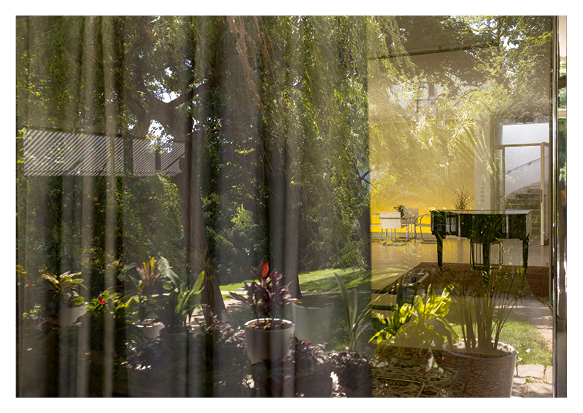
The architecture forum Die Raumgalerie and the Weissenhofmuseum are jointly presenting a double exhibition on the work of the photo artist Arina Dähnick in the Le Corbusier house in Stuttgart. In recent years, Dähnick has received several awards for her exhibitions and publications, in particular for the work of the architect Ludwig Mies van der Rohe. Her photographic works can be found in prominent collections.
The first part of the double exhibition takes visitors to the architecture forum Die Raumgalerie, where Dähnick shows an exclusive selection of her “Architectural Portraits”. With them, the photographer takes a very personal and at the same time sensual look at the architecture that she has captured during her numerous travels. The images create a multi-faceted play between external reality and the imaginative inner eye, thereby provoking an almost intimate experience.
What place could be more suitable for the second part of the exhibition than the Weissenhof workshop in Mies van der Rohe’s house. Dähnick’s works from the series “The MIES Project” and previews of her new project “Living with MIES” can be seen here. The partly large-format pictures show reflections, reflections and shadow plays in iconic buildings such as the Berlin National Gallery, the Barcelona Pavilion or the Villa Tugendhat. Far removed from documentary architectural photography, Dähnick manages to come close to the spell and fascination of Mies’ architecture.
Photo: Arina Dähnick, Tugendhat House
April 21 to June 11, 2023
The MIES Project by Arina Dähnick
Weissenhof workshop in the house of Mies van der Rohe | www.weissenhofmuseum.de | Am Weissenhof 20 | 70191 Stuttgart
Opening times Sat, Sun, public holidays 12 p.m. – 5 p.m
Architectural Portraits by Arina Dähnick
The Space Gallery | www.dieRaumgalerie.de | Ludwigstrasse 73 | 70176 Stuttgart
Vernissage: Fri, April 21, 2023, 6 p.m. in the Raumgalerie
Sat, April 22, 2023, 2 p.m. in the Weissenhofwerkstatt Raumchat: Mid / late May live from the S. R. Crown Hall Chicago
International Museum Day Sun, May 21, 2023: 2 p.m. and 4 p.m. guided tour of the Weissenhof workshop
On the occasion of the double exhibition Architectural Portraits / The MIES Project by Arina Dähnick in the Raumgalerie and the Weissenhofwerkstatt in the House Mies van der Rohe there will be a digital room chat with the artist.
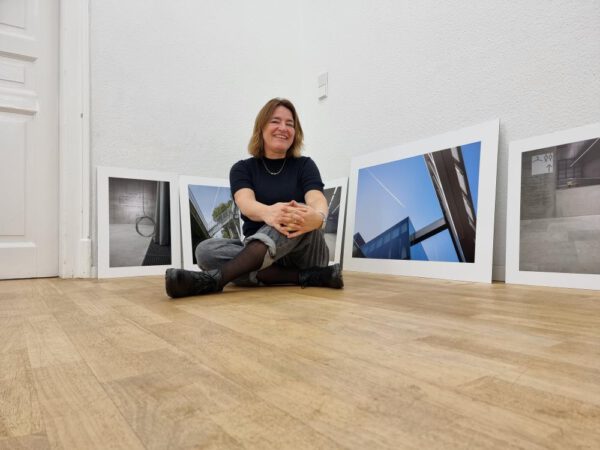
Thomas Geuder from the Raumgalerie will lead the conversation with the artist Arina Dähnick and Anja Krämer from the Weissenhofmuseum. The conversation will be broadcast live on YouTube, giving participants the opportunity to write down questions and comments directly in the YouTube chat during the stream. These will then be answered live.
The talk starts at 6 p.m. on June 7th, you can participate via the Raumgalerie YouTube channel:
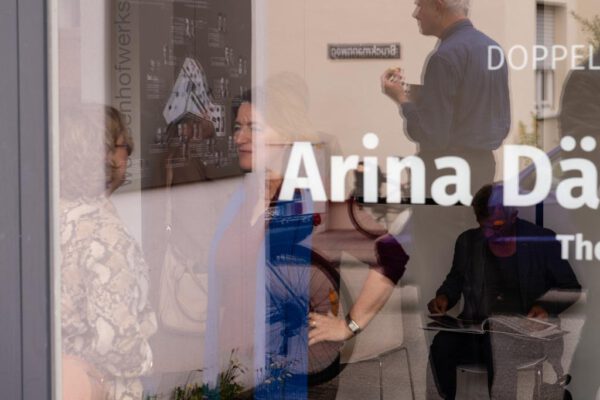
Photos: Arina Dähnick, Ralph Fischer
Sunday, June 4th, 2023, 10 a.m. – 6 p.m.:
Free admission to the Weissenhof Museum in Le Corbusier House
Sunday, June 4th, 2023, 11 a.m., 1 p.m., 3 p.m. and 5 p.m.:F
Free guided tours of the Weissenhof estate
10 a.m. – 6 p.m:
Free admission to the Weissenhof Museum in Le Corbusier House.
Since 2016 two buildings by Le Corbusier in Stuttgarts Weissenhofsiedlung have been inscribed on the UNESCO World Heritage List. Entitled “The Architectural Work of Le Corbusier – An Outstanding Contribution to the Modern Movement,” his work is an outstandung
Responding to the challenges of architecture and society in the 20th Century, Le Corbusier’s contribution to the Moderne Movement aimed to instigate a unique forum of ideas at a world level; it facilitated the invention of a new architectural language and the modernization of architectural techniques; it met the social and human needs of modern man.
Le Corbusiers semi-detached houses in Stuttgart are now home to the Weissenhof Museum. This pioneering example of architectural modernism was built as part of the Werkbund exhibition in 1927.
In one side of the museum, the history of the Weissenhof housing estate is on display, with models, photos, plans and various exhibits. The other side of the house shows the Le Corbusier house in 1927, with the recontructed original room layout, color scheme and furnishings.
location: Weissenhof Museum in Le Corbusier House, Rathenaustr. 1
11 a.m., 1 p.m., 3 p.m. and 5 p.m:
Free guided tours of the Weissenhof estate
The Weissenhofsiedlung is a milestone of architectural modernism and was built in 1927 by 17 international architects. The occasion was the exhibition “Die Wohnung” of the the German Werkbund. The basis was the urban , which was under the artistic direction of Mies can der Rohe. The guided tour (no interior visits) explains the background of the housing estate, with a focus on Le Corbusier’s two houses, which are UNESCO World Heritage Sites since 2016. In the semi-detached houses, Le Corbusier realized his “Five Points of a New Architecture” and thus coined a new formal language.
Meeting point: At the advertising column, opposite of the entrance of the Weissenhof Museum in Le Corbusier House, Rathenaustr. 1 – duration approx. 45 minutes.
Our program on International Museum Day:
10 a.m. – 6 p.m.: Free admission to the Weissenhof Museum
The Weissenhof Museum is located in Le Corbusier’s semi-detached house. The history of the Weissenhofsiedlung can be seen in one part of the house, with models, photos, plans and various exhibits. The other part of the house shows the Le Corbusier house as it was in 1927 with the original room layout, coloring and furnishings. Admission is free on International Museum Day.
11 a.m., 1 p.m., 3 p.m. and 5 p.m.: Guided tours through the Weissenhof Estate
The Weissenhof Estate, built in 1927 by 17 international architects, is a milestone in modern architecture. The guided tour (no interior visits) explains the history of the settlement and the two houses built by Le Corbusier, which are an UNESCO World Heritage site since 2016.
Meeting point: in front of the Weissenhof Museum in the Le Corbusier house, Rathenaustr. 1, Participation free of charge. Duration approx. 45 minutes. Please note that the guided tours will all be in German.
10 a.m. – 6 p.m.: Exhibition “The MIES Project by Arina Dähnick”
Works by the photo artist Arina Dähnick can be seen in our showing room Weissenhofwerkstatt in the house of Mies van der Rohe. They are part of Dähnick’s series “The MIES Project”. As the second part of the double exhibition, the architecture forum Die Raumgalerie in Stuttgart West shows “Architectural Portraits” of the artist. Dähnick’s photographic works make the multi-faceted play between external reality and the imaginative inner eye visible and thus open up a new perspective on icons of modern architecture.
Location: Weissenhof workshop in the house of Mies van der Rohe, Am Weissenhof 20
2 p.m., 4 p.m.: Guided tours through the exhibition “The MIES Project”
Guided tours through the exhibition in the Weissenhofwerkstatt take place at 2 p.m. and 4 p.m. Admission and participation in the guided tours are also free here.
Meeting point: exhibition room Weissenhofwerkstatt, Am Weissenhof 20. Please note that the guided tours will be in German.
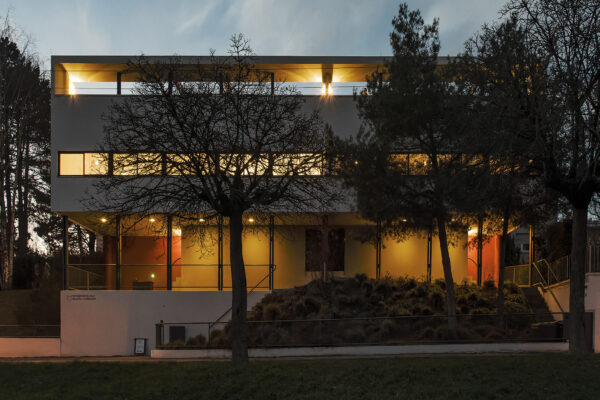
On March 25, 2023, the Long Night of the Museums will take place again in Stuttgart.
The Weissenhof Museum is also taking part. Together with other museums and cultural institutions in and around Stuttgart, we are open on this day beyond our usual opening hours from 6 p.m. to 1 a.m.
From 6.30 p.m. there are special tours every half hour, each lasting around 15 minutes. We explain why the Weissenhofsiedlung is world-famous and what makes Le Corbusier’s idea of a convertible house so special.
Admission is only possible with a ticket for the Long Night of Museums. It can be purchased in advance and at the box offices of the participating cultural institutions – including us.
Photo: Ralph Fischer
2022
2022
Until January 8th we will be showing our current special exhibition in the Weissenhofwerkstatt.
Opening hours
Sat, Sun, public holidays, 12 p.m. to 5 p.m
Admission is free.
Guided tours with curator Inken Gaukel
Sat, 19.11.2022
Sat, 03.12.2022
both at 2 p.m
No registration required. Participation is free.
Address
Weissenhofwerkstatt in the house of Mies van der Rohe
Am Weissenhof 20
70191 Stuttgart
Answers to nowadays still current questions How to build? How to reside? How to live? Were sought after by the Werkbund groups of various countries in the interwar period. The exhibition in the Weissenhofwerkstatt uses select examples from the Werkbund exhibition settlements in Stuttgart, Brno, Wrocław, Zurich, Vienna and Prague to show which innovative solutions were found at the time.
The five locations of the European Union received the European Cultural Heritage Seal in 2020 under the title “Werkbundsiedlungen in Europa 1927-1932”. The route to the award is also part of the current exhibition.
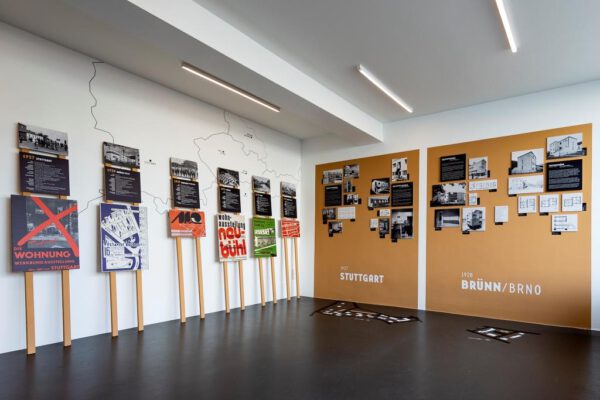
How to build? How to reside? How to live?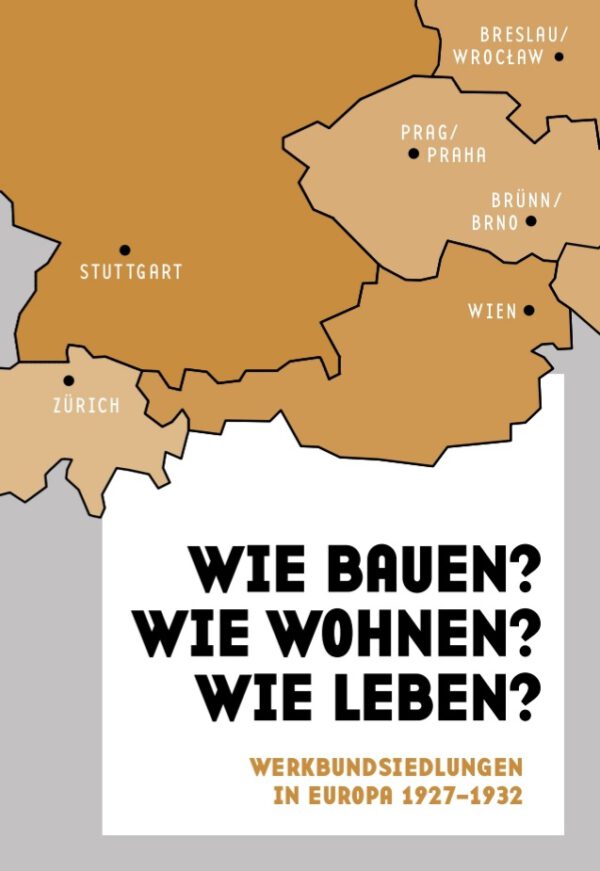
In the interwar period, the Werkbund branches of various countries sought answers to these questions, which are again relevant today. The exhibition in the Weißenhof workshop uses a selection of Werkbund estates in Stuttgart, Brno, Wrocław, Zurich, Vienna and Prague to show the innovative solutions that were found at the time. The five locations within the European Union received the European Cultural Heritage Seal in 2020 under the title “Werkbundsiedlungen in Europa 1927-1932”.
Ceremony
Thursday, October 1, 2022 from 7.30 p.m
Ceremony for the awarding of the European Cultural Heritage Seal with Nicole Razavi MdL, Minister for Regional Development and Housing of the State of Baden-Württemberg and Mayor Dr. Frank Nopper, State Capital Stuttgart
Panel discussion and exhibition opening
We kindly ask you to register at: info@weissenhofmuseum.de
Exhibition at the Weissenhofwerkstatt
Weissenhofwerkstatt in the house of Mies van der Rohe
Am Weißenhof 20, 70191 Stuttgart
October 15, 2022 to January 8, 2023
Sat, Sun, public holidays
12 p.m. to 5 p.m Admission free
7:00 p.m – 8:30 p.m, Brenzkirche
In collaboration with the flautist Prof. Stephanie Winker and Leipzig based artist NK Doege, the Weissenhof Museum has developed an exciting concert to conclude this year’s summer festival on the Killesberg. The concert will refer to Le Corbusier’s work “The Modulor”, in which he put into words what affected him throughout his life: the search for a simple system of proportions based on the human body, that could be used anywhere in the world in order to design harmonious rooms and buildings. In this Le Corbusier draws on mathematics and music in numerous instances. “Music is, as with architecture, time and space. Music and architecture depend on measure.” For Le Corbusier rhythm, intervals and the golden ratio were means of getting closer to his goal of a more harmonious world.
For the concert, NK Doege designed installations based on Le Corbusiers Modulor. In these the three musicians, Marta Klimasara on drums, Panu Sundqvist on cello and Stephanie Winker on flute will play they respecive instruments. They respond with works of music by Bach, Xenakis and Globokar to texts read from Le Corbusier’s works of writing.
We would like to thank the Wüstenrot Foundation and the Cultural Office of the City of Stuttgart for their financial support.
